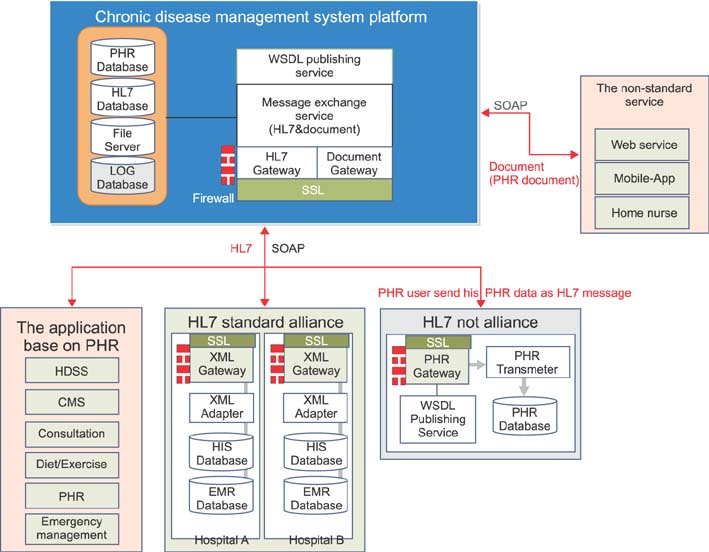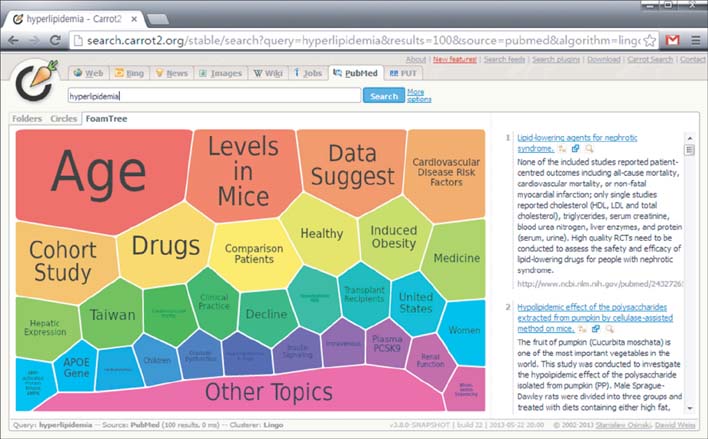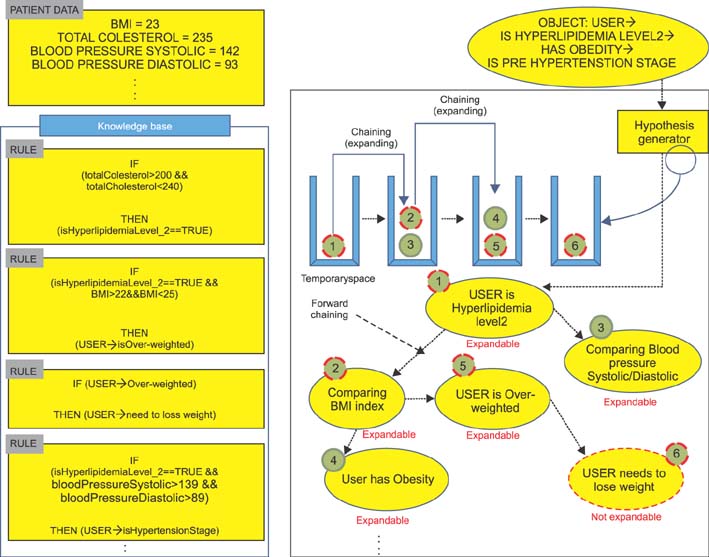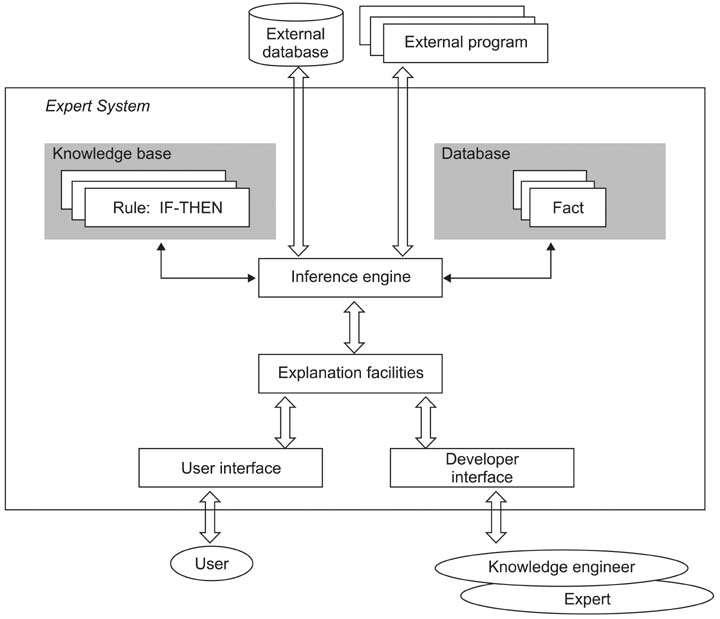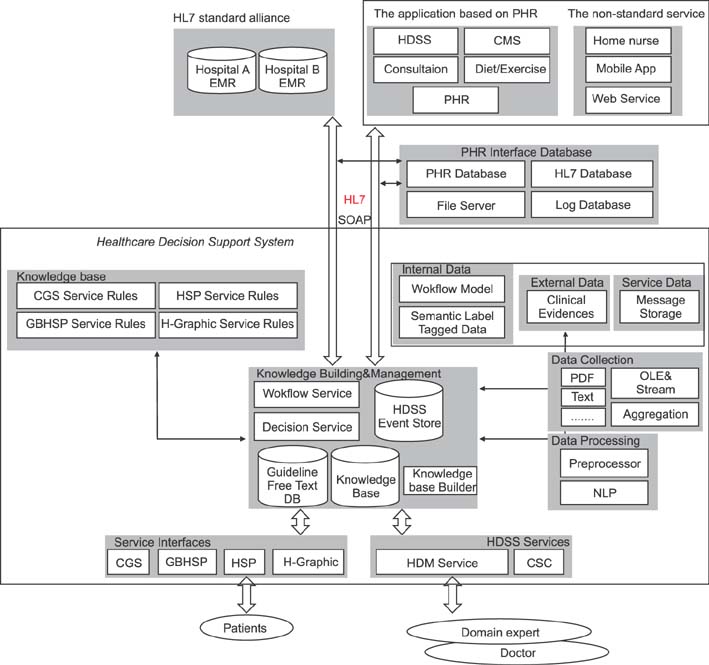Healthc Inform Res.
2014 Jul;20(3):173-182. 10.4258/hir.2014.20.3.173.
Healthcare Decision Support System for Administration of Chronic Diseases
- Affiliations
-
- 1U-Healthcare Institute, Gachon University, Incheon, Korea.
- 2Department of IT Convergence Engineering, Gachon University, Seongnam, Korea.
- 3Department of Computer Science, Gachon University, Seongnam, Korea. ugkang@gachon.ac.kr
- KMID: 2284580
- DOI: http://doi.org/10.4258/hir.2014.20.3.173
Abstract
OBJECTIVES
A healthcare decision-making support model and rule management system is proposed based on a personalized rule-based intelligent concept, to effectively manage chronic diseases.
METHODS
A Web service was built using a standard message transfer protocol for interoperability of personal health records among healthcare institutions. An intelligent decision service is provided that analyzes data using a service-oriented healthcare rule inference function and machine-learning platform; the rules are extensively compiled by physicians through a developmental user interface that enables knowledge base construction, modification, and integration. Further, screening results are visualized for the self-intuitive understanding of personal health status by patients.
RESULTS
A recommendation message is output through the Web service by receiving patient information from the hospital information recording system and object attribute values as input factors. The proposed system can verify patient behavior by acting as an intellectualized backbone of chronic diseases management; further, it supports self-management and scheduling of screening.
CONCLUSIONS
Chronic patients can continuously receive active recommendations related to their healthcare through the rule management system, and they can model the system by acting as decision makers in diseases management; secondary diseases can be prevented and health management can be performed by reference to patient-specific lifestyle guidelines.
Keyword
MeSH Terms
Figure
Reference
-
1. Yoon KH, Lee JH, Kim JW, Cho JH, Choi YH, Ko SH, et al. Epidemic obesity and type 2 diabetes in Asia. Lancet. 2006; 368(9548):1681–1688.
Article2. Statistics Korea. Cause of death statistics in 2011 [Internet]. Daejeon, Korea: Statistics Korea;c2013. cited at 2013 May 8. Available from: http://kostat.go.kr.3. Kim H, Cho J, Choi Y, Oh J, Lee J, Yoon K. Ubiquitous health care system for chronic disease management. J Korean Inst Commun Sci. 2010; 27(9):3–8.4. Song J, Lee YJ, Nam GW. Design and implementation of the chronic disease management platform based on personal health records. J Korea Ind Inf Syst Soc. 2012; 17(1):47–62.
Article5. Gurjar R, Li Q, Bugbee D, Colecchi J, Sperling M, Karson A, et al. Design and implementation of a clinical rule editor for chronic disease reminders in an electronic medical record. AMIA Annu Symp Proc. 2006; 2006:936.6. Song TM, Ryu S, Lee SH. U-health service for managing chronic disease: a case study on managing metabolic syndrome in a health center in South Korea. Healthc Inform Res. 2011; 17(4):260–266.
Article7. Shepherd T, Hain S. eHealth in Queensland: progressing towards a patient centric, networked model of care. Healthc Inform Res. 2011; 17(3):190–195.
Article8. Choi JS, Lee WB, Rhee PL. Cost-benefit analysis of electronic medical record system at a tertiary care hospital. Healthc Inform Res. 2013; 19(3):205–214.
Article9. Shin SY, Chung CK. A future of medical information system: establishment of hospital-oriented personal health record. J Korean Med Assoc. 2009; 52(11):1115–1121.
Article10. Lee SY. Development of HIS system through the HL7-based combination of legacy system. J Korea Soc Comput Inf. 2004; 9(3):55–62.11. HL7. Health Level Seven International [Internet]. Ann Arbor (MI): HL7;c2013. cited at 2013 Dec 19. Available from: http://www.hl7.org.12. Park DK, Jung EY, Jeong BH, Moon BC, Kang HW, Tchah H, et al. Smart information system for Gachon University Gil Hospital. Healthc Inform Res. 2012; 18(1):74–83.
Article13. Wright A, Sittig DF. A four-phase model of the evolution of clinical decision support architectures. Int J Med Inform. 2008; 77(10):641–649.
Article14. Yoon Y, Kim IK, Yi BK. Medical app's CDSS service using mobile cloud. In : Proceedings of the Korean Information Science Society Conference; 2011 Jun 29-Jul 1; Gyeongju, Korea. p. 323–326.15. Yun T, Yi GS. Application of random forest algorithm for the decision support system of medical diagnosis with the selection of significant clinical test. Trans Korean Inst Electr Eng. 2008; 57(6):1058–1062.16. Kong G, Xu DL, Liu X, Yang JB. Applying a belief rule-base inference methodology to a guideline-based clinical decision support system. Expert Syst. 2009; 26(5):391–408.
Article17. Achour SL, Dojat M, Rieux C, Bierling P, Lepage E. A UMLS-based knowledge acquisition tool for rule-based clinical decision support system development. J Am Med Inform Assoc. 2001; 8(4):351–360.
Article18. Eun SJ, Do JH, Kim KH, Whangbo TK. An implementation of oriental medicine u-healthcare service model using CDSS. J Korean Soc Internet Inf. 2010; 11(5):59–70.19. Regier R, Gurjar R, Rocha RA. A clinical rule editor in an electronic medical record setting: development, design, and implementation. AMIA Annu Symp Proc. 2009; 2009:537–541.20. Gonzales-Aguilar A, Ramirez-Posada M. Carrot2: búsqueda y visualizacicón de la información. El Profesional de la Información. 2012; 21(1):105–112.21. PubMed. PubMed Central (PMC) [Internet]. Bethesda (MD): PubMed;c2013. cited at 2013 Dec 19. Available from: http://www.ncbi.nlm.nih.gov/pubmed/.22. Kamel Boulos MN. Expert system shells for rapid clinical decision support module development: an ESTA demonstration of a simple rule-based system for the diagnosis of vaginal discharge. Healthc Inform Res. 2012; 18(4):252–258.
Article23. Negnevitsky M. Artificial intelligence: a guide to intelligent systems. 3rd ed. Edinburgh: Pearson Education;2011.
- Full Text Links
- Actions
-
Cited
- CITED
-
- Close
- Share
- Similar articles
-
- The future of artificial intelligence for physicians
- Development of a Decision Support Computer Program for Pain Management in Institutionalized Patients with Dementia
- Development of a Decision Support System for Analysis and Solutions of Prolonged Standing in the Workplace
- Follow-Up Decision Support Tool for Public Healthcare: A Design Research Perspective
- Bayesian-Based Decision Support System for Assessing the Needs for Orthodontic Treatment

